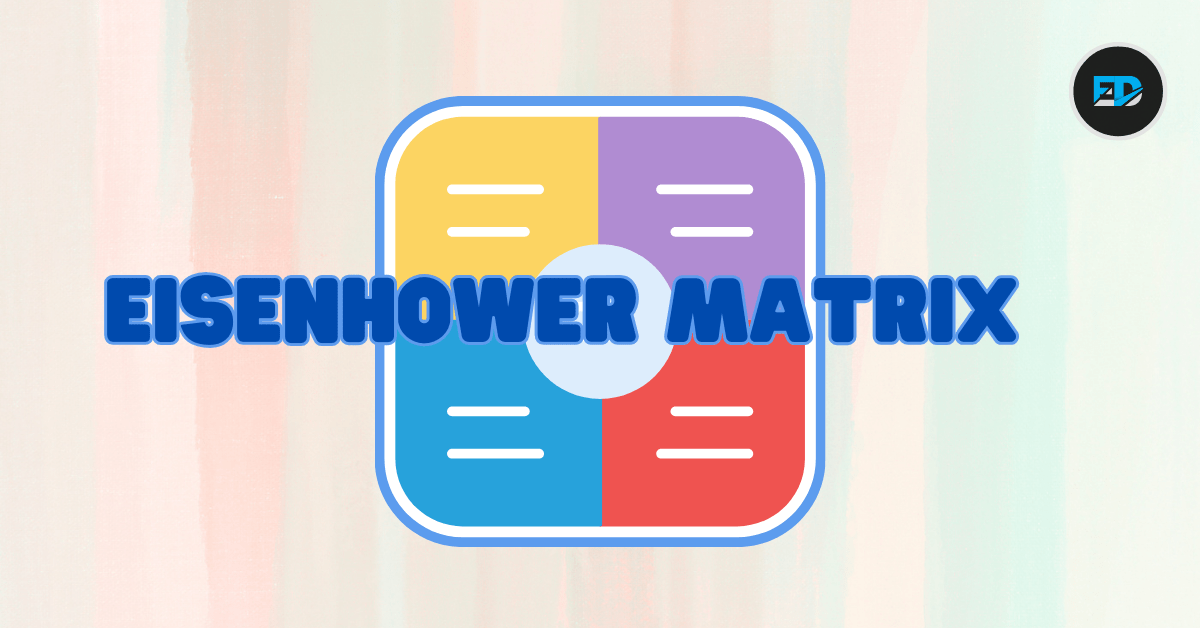In the bustling world of working in startup, where time is a precious commodity and productivity is the ultimate currency. In this bustling environment, mastering productivity techniques is essential for staying on top of tasks and driving growth. Let’s explore the Eisenhower Matrix concept, a simple yet powerful idea designed to help individuals prioritize effectively and make the most of their time. In this blog, we’ll explore the Eisenhower Matrix, its relevance to startup success, and practical tips for implementation.
Let’s understand the history of Eisenhower Matrix, also known as the Urgent-Important Matrix, is named after Dwight D. Eisenhower, the 34th President of the United States. Eisenhower was not only a prominent political figure but also a highly effective leader known for his exceptional time management skills. The concept of the Eisenhower Matrix is said to have originated from a quote attributed to Eisenhower: “I have two kinds of problems, the urgent and the important. The urgent are not important, and the important are never urgent.” This quote inspired a framework for categorizing tasks based on their urgency and importance, which has since become a cornerstone of productivity management.

The Eisenhower Matrix is a simple grid divided into four quadrants, each representing a different category based on urgency and importance:
- Urgent and Important (Do): Tasks in this quadrant require immediate attention and are crucial for achieving your goals. These are your top priorities, such as meeting deadlines, addressing critical issues, or handling urgent client needs.
- Important, but Not Urgent (Decide): This quadrant is reserved for tasks that contribute to your long-term objectives but don’t require immediate action. Examples include strategic planning, skill development, and relationship building.
- Urgent, but Not Important (Delegate): Here lie tasks that demand immediate action but don’t directly contribute to your long-term goals. These tasks can often be delegated to others, freeing up your time for more important work.
- Not Urgent and Not Important (Delete): This quadrant is for tasks that neither contribute to your immediate priorities nor align with your long-term goals. Examples include distractions, time-wasters, and activities with little to no value.
There are several tools available that can be used to implement and work with the Eisenhower Matrix effectively. Here are a few examples:
- Trello: Trello is a popular project management tool that allows users to create boards, lists, and cards to organize tasks. You can create a Trello board with four lists representing each quadrant of the Eisenhower Matrix and move tasks between lists as their urgency and importance change.
- Asana: Asana is another project management tool that offers similar functionality to Trello. You can create projects and tasks in Asana and use tags or custom fields to indicate the urgency and importance of each task, allowing you to filter and prioritize them accordingly.
- Google Sheets or Excel: You can create a simple spreadsheet in Google Sheets or Excel to organize tasks using the Eisenhower Matrix. Create four columns representing each quadrant and list tasks accordingly. You can then use color-coding or conditional formatting to visually distinguish between tasks based on their urgency and importance.
- Todoist: Todoist is a task management app that allows users to create tasks, set due dates, and organize tasks into projects. You can use Todoist’s priority levels or labels to indicate the urgency and importance of tasks and filter them accordingly.
- Notion: Notion is a versatile workspace tool that allows users to create customizable databases, pages, and boards. You can create a database in Notion to organize tasks using the Eisenhower Matrix and customize views to filter and prioritize tasks based on their urgency and importance.
Practical Tips:
- Prioritize tasks based on their urgency and importance.
- Regularly review and update your task list to ensure alignment with your goals.
- Delegate tasks whenever possible to free up time for more strategic activities.
- Limit distractions and focus on high-impact tasks to maximize productivity.
In the fast-paced world of startups, mastering productivity is essential for achieving success. By adopting the Eisenhower Matrix and implementing practical tips for effective task management, you can take control of your time, prioritize effectively, and drive your startup towards greater heights. So, take inspiration from Eisenhower’s timeless wisdom, and start mastering your productivity today!






Leave a Reply
You must be logged in to post a comment.